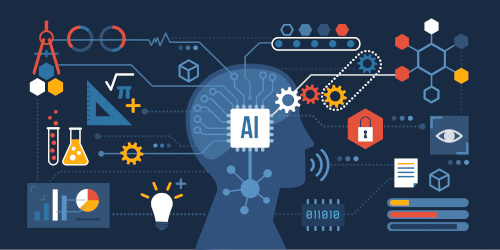These steps outline a comprehensive approach to managing change within an organization, particularly when introducing new technology. Here’s a breakdown of each step:
- Identify the need for change: Assess current processes and systems to determine where improvements are needed. This could be due to inefficiencies, outdated technology, or changing business requirements.
- Plan for change: Develop a detailed plan that outlines the steps needed to implement the change successfully. This plan should address timelines, resource allocation, communication strategies, and how potential roadblocks will be overcome.
- Involve employees in the selection process: Engage employees in the decision-making process when selecting new technology. Their input can provide valuable insights and increase buy-in for the chosen solution.
- Highlight the benefits: Clearly communicate the advantages of the new technology to employees. Focus on how it will improve their work processes, making tasks easier, faster, or more efficient.
- Provide training: Offer comprehensive training to ensure employees have the necessary skills to use the new technology effectively. This can include formal training sessions, online tutorials, or personalized coaching.
- Set expectations: Define clear expectations for how the new technology should be used. This includes guidelines on usage, expected outcomes, and any relevant policies or procedures.
- Make it user-friendly: Choose technology that is intuitive and easy to use. A user-friendly interface can facilitate adoption and reduce resistance among employees.
- Provide support: Offer ongoing support to employees as they transition to using the new technology. This could involve providing access to IT support, troubleshooting guides, or designated support personnel.
- Encourage experimentation: Encourage employees to explore and experiment with the new technology. This can foster innovation and help employees discover new ways to leverage its capabilities.
- Celebrate success: Recognize and celebrate milestones as employees embrace the new technology. This can help reinforce positive behaviors and motivate continued adoption.
- Address resistance: Address any resistance or concerns among employees regarding the new technology. This may involve addressing misconceptions, providing additional training, or addressing technical issues.
- Lead by example: Demonstrate your commitment to the change by actively using the new technology yourself. Leading by example can inspire confidence and encourage employees to follow suit.
The provided text outlines several key points for developing an effective training program for IT staff:
- Alignment with Individual Goals and Business Roadmap: Tailoring the training program to individual needs while aligning it with the organization’s key technology initiatives ensures maximum participation and relevance.
- Ongoing Education and Training: Continuous learning is essential for IT staff to remain competitive. Keeping teams updated on the latest information, tools, and methodologies enables them to deliver optimal value to the organization.
- Formal vs. Informal Structure: The structure of the training program can vary depending on factors such as team size, structure, and company culture. Formal training may be necessary for topics like regulatory policies or cybersecurity practices.
- Linking Individual Motivations to Organizational Requirements: By aligning individual motivations with organizational needs, the training program can benefit both individuals and the company as a whole.
- Holistic Development Strategy: A comprehensive training program should encompass technical and interpersonal skills development, incorporating various modalities such as on-demand video content, instructor-led training, and hands-on learning.
- Accessible Resources and Tools: Providing employees with the necessary tools and resources to effectively utilize learning materials ensures tangible benefits from the training program.
- Dedicated Learning Time: Allocating dedicated learning time during work hours demonstrates a commitment to employee development and facilitates progress while balancing work projects and upskilling milestones.
- Regular Evaluation and Feedback: Evaluating training effectiveness through skills assessments and employee feedback surveys allows for ongoing improvement and adjustment of the training program.
The provided text underscores the importance of effective leadership in driving the success of training programs for IT staff. Here’s a breakdown of the key points:
- Securing Buy-In from IT Leadership: Obtaining support from IT leadership at all levels is critical for the success of the training program. This includes identifying an executive sponsor and a dedicated individual responsible for overseeing implementation.
- Selection of the Right Leader: Leading the program requires a leader who possesses enthusiasm, practical expertise, and alignment with organizational objectives. It’s crucial to carefully select individuals who can effectively guide the program.
- Collaboration Across Departments: Collaboration among leaders in technology, learning and development (L&D), and human resources is essential. This collaboration ensures alignment with organizational goals and consistency in program implementation.
- Transparency and Communication: Transparent communication establishes a framework for employees to recognize the personal and organizational value of the program. Keeping all stakeholders informed and engaged is key to success.
- Catering to Individual Needs: Tailoring the program to meet individual needs enhances its effectiveness. Offering various formats such as self-guided and formal training, as well as immersive learning experiences, ensures engagement and relevance to participants.
By following these principles of program leadership, organizations can foster a supportive environment for IT upskilling initiatives, drive employee engagement, and ultimately achieve alignment with broader business objectives.
From the insights provided by Craig and Clive, here are the key takeaways:
- Adaptability and Future Readiness: An effective internal training program should be adaptable to address immediate needs while also focusing on developing technology competencies for the future. This ensures that employees are equipped to handle evolving challenges and opportunities.
- Culture of Continuous Learning: Building a culture of continuous learning within the organization is crucial. Prioritizing skills development enables employees to stay ahead of the competition and navigate economic uncertainties effectively.
- Proactive Investment in Employee Skills: Proactively investing in employee skills development aligned with business objectives cultivates agility within the organization. This strategic approach ensures that the workforce is prepared to meet evolving demands and drive long-term success.
By embracing adaptability, fostering a culture of continuous learning, and making proactive investments in employee skills development, organizations can position themselves for sustained growth and competitiveness in the ever-changing business landscape







